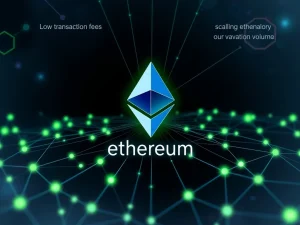Decoding SEC’s Staking Delay: Impact on Grayscale Ethereum ETFs and Crypto Regulation

Frustration mounts in the crypto community as the Securities and Exchange Commission (SEC) announces another delay. This time, the regulatory body has postponed its decision regarding the approval of staking services for Grayscale’s Ethereum ETFs. What does this mean for the future of Ethereum ETF products and the broader landscape of crypto regulation? Let’s dive into the details of this latest development.
Breaking Down the SEC’s Staking Delay for Grayscale ETH ETF
In a recent announcement on April 14th, the SEC revealed it needs more time to decide on a proposed rule change that would allow Grayscale to offer staking on its Ethereum Trust ETF and Grayscale Ethereum Mini Trust ETF. The new deadline for this critical decision is now set for June 1st, pushing back the initial timeline and leaving investors in suspense. This delay specifically impacts the potential for investors to stake their Ether holdings within these ETF structures, a feature many believe is vital for the attractiveness of Ethereum ETF products.
This news arrives shortly after the SEC greenlit options trading for spot Ether ETFs, a move perceived as progressive. However, the staking delay introduces a layer of complexity and concern. Why the hold-up on staking when options trading gets the go-ahead? It appears the SEC is proceeding cautiously, perhaps wanting a more comprehensive understanding of the implications of staking within ETF frameworks before giving the final nod.
Why is Staking So Crucial for Ethereum ETFs?
Staking is not just a buzzword; it’s a fundamental mechanism in proof-of-stake blockchains like Ethereum. Here’s why it’s considered a game-changer for Ethereum ETF products:
- Yield Generation: Staking allows ETF holders to earn passive income by participating in the Ethereum network’s validation process. Current estimates show annual yields ranging from 2% to 7% on platforms like Kraken, and around 2.4% on Coinbase. This yield can significantly boost the overall returns for investors.
- Enhanced ETF Attractiveness: The ability to stake adds a compelling incentive for investors. It transforms an Ethereum ETF from simply tracking the price of Ether to a yield-generating asset, making it more competitive with other investment options.
- Network Security Contribution: By staking, ETF holders indirectly contribute to the security and operational efficiency of the Ethereum blockchain. This aligns investment with active participation in the ecosystem’s growth.
Essentially, staking can be the key ingredient that elevates Ethereum ETF products from passive investment vehicles to dynamic, yield-generating assets.
Grayscale and the Race for Staking-Enabled ETH ETFs
Grayscale isn’t alone in this race. Asset management giants like BlackRock, with their 21Shares iShares Ethereum Trust, are also vying for SEC approval to offer staking services. The competition is heating up as firms recognize the potential of staking to attract investors to their Ethereum ETF offerings. Grayscale’s initial proposal to the NYSE in February underscored the industry’s eagerness to integrate staking into these investment products. The current staking delay, therefore, impacts not just Grayscale, but the entire competitive landscape of Ethereum ETFs.
Contrasting Fortunes: Ethereum ETFs vs. Bitcoin ETFs
The backdrop to this staking delay is the contrasting performance of Ethereum ETFs compared to their Bitcoin counterparts. While Ethereum ETFs have attracted a substantial $2.28 billion in net inflows since launch, Bitcoin ETFs have witnessed a staggering $35.4 billion. This disparity highlights a potential adoption gap.
Several factors contribute to this difference:
- First-Mover Advantage: Bitcoin ETFs had a head start, launching in January 2024 and capitalizing on pent-up demand.
- Institutional Familiarity: Institutions are generally more familiar and comfortable with Bitcoin, often seen as the ‘original’ cryptocurrency.
- Yield Component: The absence of staking in current Ethereum ETF products might be a factor. Staking could be the feature that closes the adoption gap by making ETH ETFs more appealing.
The SEC’s approach to crypto regulation, particularly concerning staking, could significantly influence whether Ethereum ETF products can bridge this adoption gap and reach their full potential.
The Broader Implications of SEC’s Crypto Regulation Stance
This staking delay is another chapter in the ongoing saga of crypto regulation in the United States. The SEC’s cautious approach reflects a broader regulatory landscape that is still evolving. While the approval of options trading for Ether ETFs signals some progress, the staking delay underscores the nuanced and often slow pace of regulatory developments in the crypto space.
Key takeaways regarding the SEC and crypto regulation include:
- Gradual Progress: The SEC is taking incremental steps, approving some aspects of crypto ETFs (like options trading) while carefully scrutinizing others (like staking).
- Investor Protection Focus: Regulatory caution likely stems from concerns about investor protection and the need to fully understand the risks and implications of new crypto financial products.
- Long-Term Vision Needed: The industry needs clarity and a predictable regulatory framework to foster innovation and growth. Delays and uncertainty can hinder progress and investor confidence.
What’s Next for Grayscale ETH ETFs and Staking?
The crypto world now waits with bated breath for the June 1st deadline. Will the SEC finally give the green light to staking for Grayscale ETH ETFs? The decision will not only impact Grayscale and other ETF providers but also send a strong signal about the future direction of crypto regulation in the US. Investors and industry participants should closely monitor developments and prepare for potential shifts in strategy based on the SEC’s upcoming decision. The staking delay serves as a reminder of the ongoing dialogue between innovation and regulation in the dynamic world of cryptocurrency.









